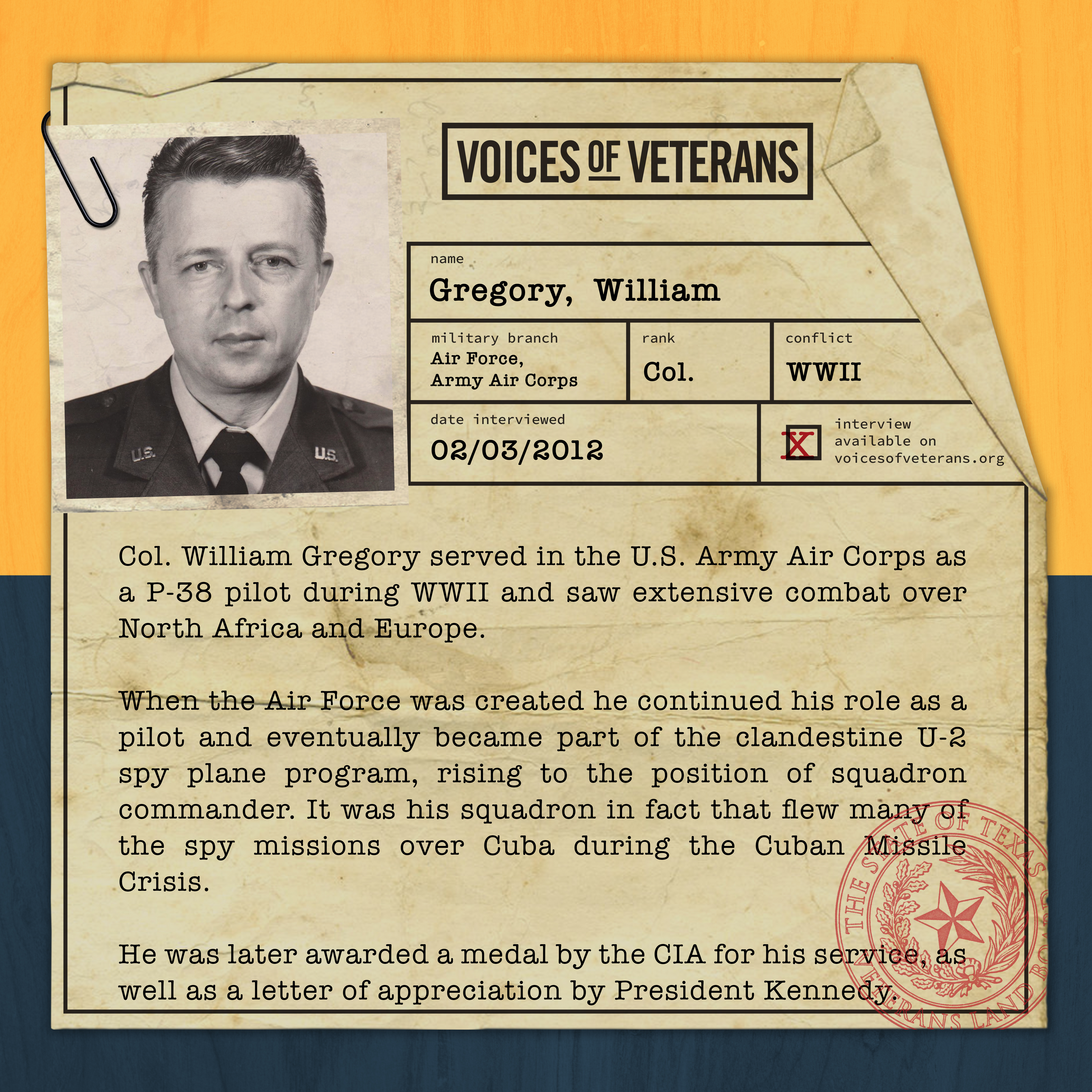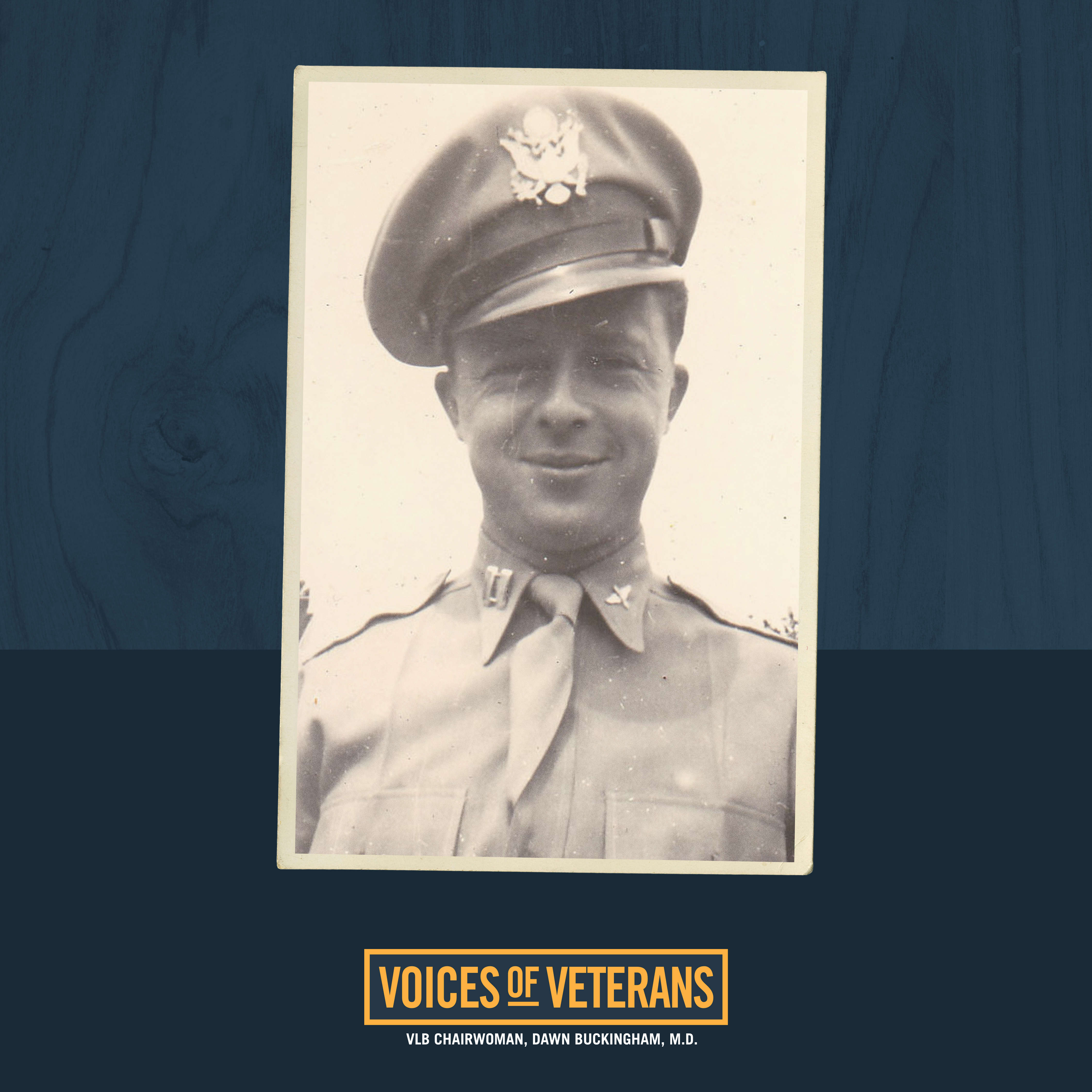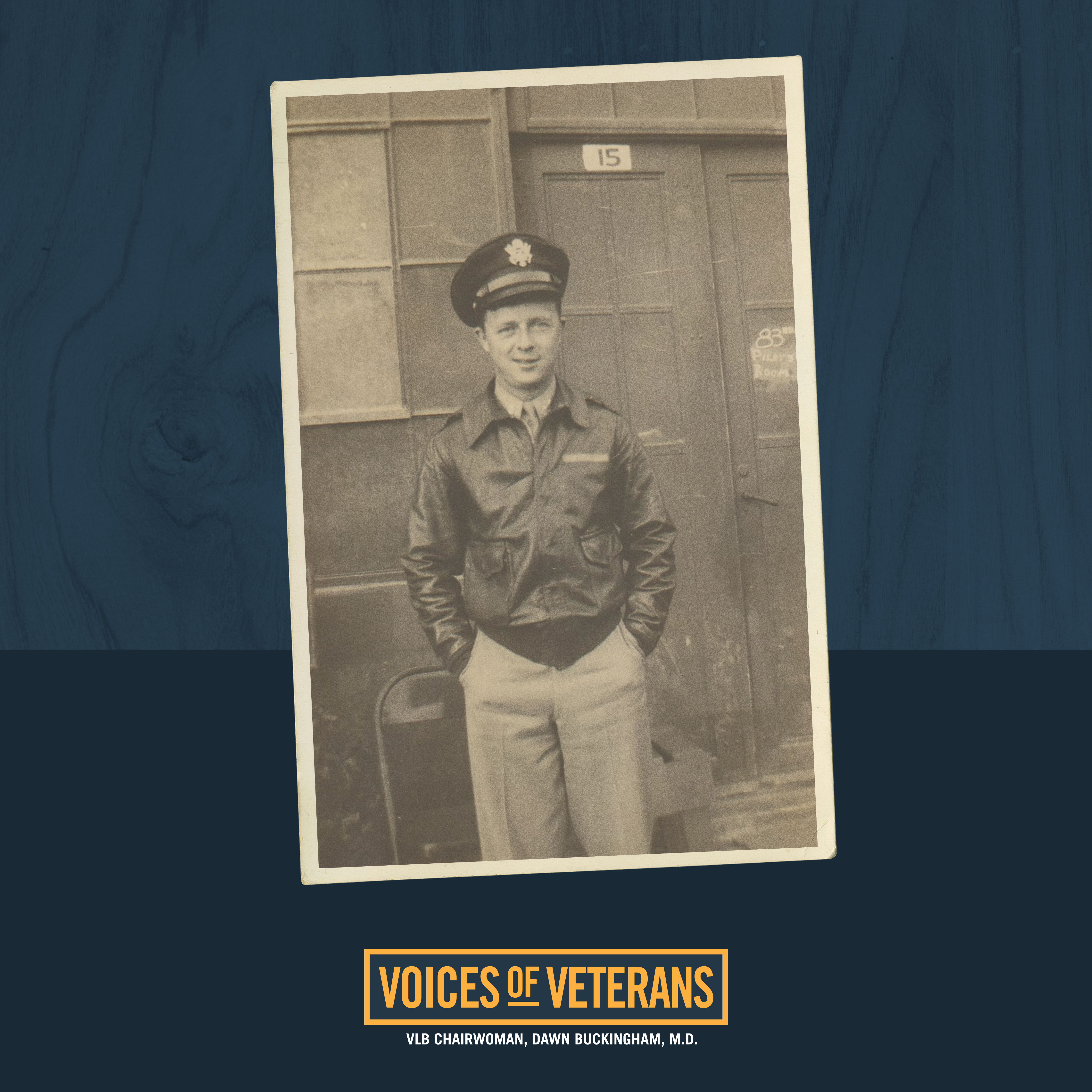Voices of Veterans: Col. William Gregory Shares His Story of Service in the U.S. Air Force and Army Air Corps
AUSTIN — Today, Texas Land Commissioner and Veterans Land Board (VLB) Chairwoman Dawn Buckingham, M.D., is proud to introduce the next installment of the series highlighting the VLB's Voices of Veterans oral history program. This week, we highlight the service of Col. William Gregory who served in the Air Force and Army Air Corps.
Gregory was born in Smith County, Tennessee on August 5, 1920 and said he grew up on a sharecroppers farm. By the time he was ready to go to college, the reality of affording to go loomed large.
"I grew up in a very poor family on a farm and it was a real problem for me to go to college. We were actually sharecroppers in those years, and so I worked hard in the fields as a teenager, and I just felt like there was a better life than that, and so I managed to go to college at Middle Tennessee State University at Murfreesboro, on a government sponsored program and then that opportunity presented itself," Gregory explained, referencing his path to eventually joining the WWII.

Gregory said his first flight came in the spring of 1940 at Middle Tennessee State University, about a year and half before the bombing of Pearl Harbor by the Japanese, thrusting the United States into WWII.
"At our school we had two Piper Cubs and two instructors and we did some ground school in aviation. So we completed 30 flying hours which included a solo cross country," he said. "I felt very fortunate to be in this program because there weren’t many people flying in Tennessee 72 years ago, or even anywhere in the country."
By the time he was 21, Gregory said he was inducted into the aviation cadets at Fort Oglethorpe, Georgia before boarding a train the next day bound for New Orleans and then into Uvalde, Texas. He said the aviation cadets were the first class to use Garner Field, so new in fact, the barracks weren't quite ready so they ended up staying at the famous Kincaid Hotel.

"Our barracks got finished and we started doing the military drills and flying and ground school, and it was really a busy time. We flew the PT-19 Fairchild there at Garner Field, and we finished on December the 5th, 1941," Gregory said. "On December the 7, 1941, we went by bus to Randolph Air Field which was considered the West Point of the Air at that time, and that was of course Pearl Harbor Day, December the 7th."
Gregory said after the bombing of Peal Harbor, their training really picked up speed as they shifted to training seven days a week from early in the morning to late in the evening. It was after the war started that Gregory said he took his first night flight.
"I was amazed at how black it was," Gregory said about flying at night the first time. "Randolph was a long way from San Antonio, it still is, but there were no lights
at that time and this was a dark night, and I thought man, I don’t know if I can handle this at night."
Gregory's military career would see him traverse the world and and he flew 50 missions as a P-38 pilot during WWII, seeing extensive combat over North Africa and Europe.

"There were 28 of us young pilots that started on May of 1943, started combat, and there were only 7 of us that completed 50 missions at the end of the year," he explained. "I had four tent mates. We lived there in pyramidal tents, and I lost all four of my tent mates during that year. So we were frequently outnumbered three to one early on. This changed later.”
Gregory told a story of one those earlier missions and how 12 of them were escorting B-17's and they were met by about forty ME-109's, instantly launching them into a "fire fight."
"We instantly got into heavy combat and we were all over the sky, and all of a sudden I was all by myself and I couldn’t see another airplane at my altitude. I looked down and I saw one P-38 in a tight circle and there were four ME-109’s chasing him, and so I realized I had to try to help him out, took a steep dive down to where they were in this orbit, and it appeared that when I got my sight on them I could also see him, so I wasn’t able to shoot at them or him, and so I made a quick pass and I got two of those 109’s on lee, and I decided this would be a good time to see if the P-38 could outrun the 109. I found that it could. So the two of them chased me for quite a ways, one finally quit, and then the other one chased me a while longer and finally he turned back, and when he did I turned on him and he did not reach his base."

After escorting B17’s and B-25’s, B-26’s on a lot of their missions, Gregory said he was selected for the first dive bombing mission in P-38’s, something that had not been done before. He said they provided some practice bombs for to use and we did some practice bombing on the dry lakes. Six P-38 pilots were selected for this first mission, and the target was Alghero in Sardinia, on the northwest coast of Sardinia. After bring briefed, Gregory said the mission was on.
"We flew out very low on the deck to avoid contact by radar, and when we reached the target we climbed up to about 3,000 feet, and each of us individually went into a steep dive down on the target, dropped our bomb, and when I rolled out of this steep dive right near the ground, I was lined up perfectly with two large seaplanes, and the P-38 had four 50-caliber machine guns in the nose plus one 20 mm cannon, and when you were firing all of these it was an awesome cone of fire," he said, the images flashing in mind. "So, I lined up on the first one and gave it a long burst of fire, and it immediately burst into flame and the I sighted in the second one, gave it a long burst and the same thing happened."
Gregory said that first mission was a success, adding the enemy had bedded down for the evening and he believes they woke them up. Six dive mission would follow that one on the Island of Panarea, off the coast of Tanzania.

"I finally completed the 50 missions at the end of that year," he said about flying P-38 #55. "Unfortunately, it did not return on the very next mission. I think if I'd have been there, it would have returned."
Gregory's military career would be defined most during a time of immense uneasiness in the United States during the Cuban Missile Crisis. What started as something routine, he thought, turned into something bigger as the years went on. Gregory said he'll never forget October 15, 1962, a day that changed history.
"It was just after midnight on the 15th that Steve Heiser took off from North Base there at Edwards. We had him positioned there at the end of the runway, and just short after midnight, pitch dark, and he met the sun over the Gulf of Mexico," Gregory recalled. "Then he flew near the Yucatan peninsula before turning north and flew directly over the western end of Cuba where we had found the SAM sites before. He was at 72,500 feet and he was only over the island seven minutes total, and so this mission discovered the first intercontinental ballistic missiles in Cuba, and of course there were many other missions flown."
To listen to Col. William Gregory tell his story, click the button below:
Listen to Col. Gregory's Story
Veterans can email VoicesofVeterans@glo.texas.gov to tell their stories. Please note that the Veteran must be a resident of Texas at the time of their interview.
Voices of Veterans is a state agency's first Veteran oral history program. It records the stories of Texas Veterans through their time in service and after returning home from combat.
The VLB records interviews with veterans over the phone or in person. Their interviews are then permanently archived in the Office of Veterans Records at the GLO, where they join the historical documents of other Texas heroes such as Sam Houston, Davy Crockett, Jim Bowie, and William Barret Travis.
Veterans' interviews are also available to researchers, historians, genealogists, and the public. These precious records inspire future generations and remind us of our Veterans' sacrifices.
To listen to the over 500 archived stories of Veterans documented through the GLO's Voices of Veterans oral history program, click the button below:
More Press Releases
